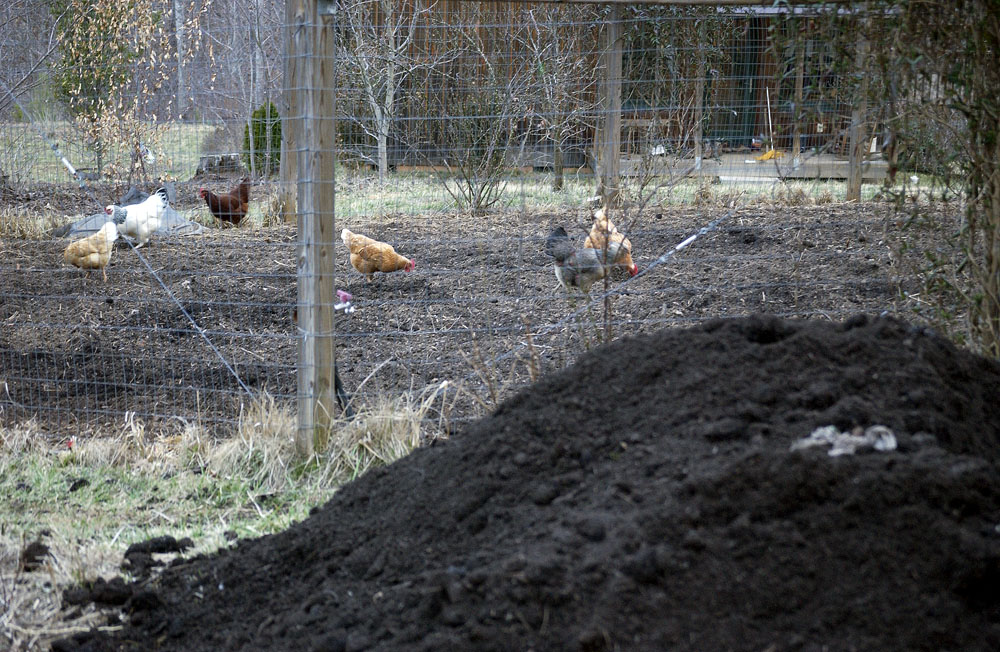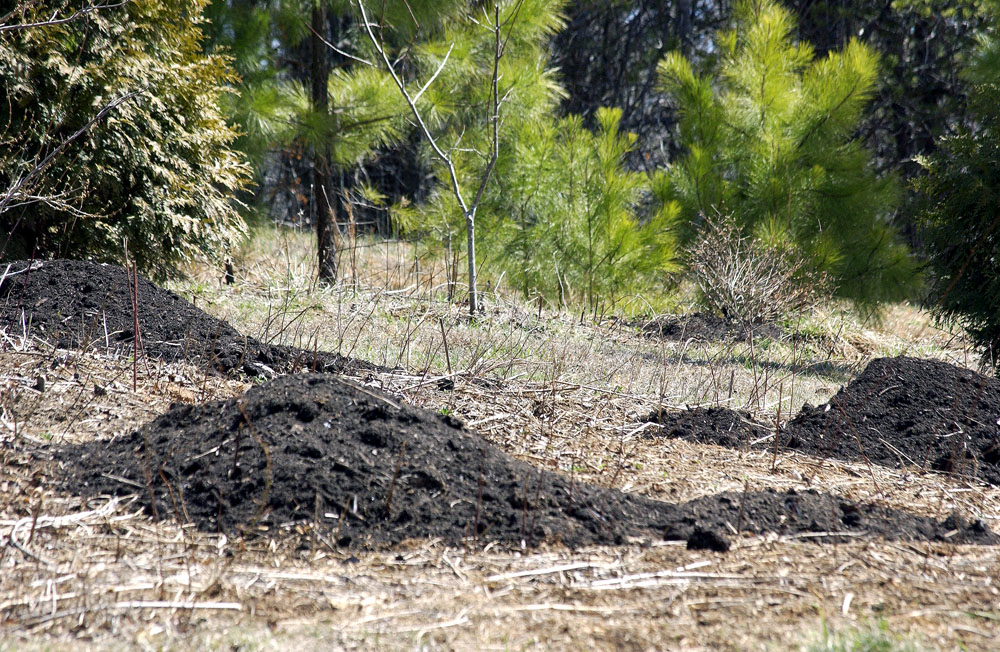
The garden plot with compost freshly tilled in … and the chickens working it
Increasingly we think less in terms of fertilizing plants and more in terms of feeding the worms, on the grounds that if your worms are abundant and well fed, the plant life will flourish.
Part of this process is compost. The only form of compost easily available here at reasonable prices is leaf compost. This is a high-carbon compost and needs time to digest into the soil. But it’s good worm food if applied at the right time. Now is the right time. The soil is starting to warm up, and we’re a few weeks away from spring planting. Rain is forecast for Sunday. So Ken rushed to get several tons of compost spread around ahead of the rain. Then he tilled it into the soil. Given two or three weeks, a little rain, and a little warm sun, the compost will decompose into the soil before the spring planting.
My understanding is that high-carbon compost like leaf compost must be digested by bacteria before its nutrition is available to plants. While the bacteria are doing this work, they suck up a lot of nitrogen from the soil. Then the bacteria die, releasing the nitrogen back to the soil and making the nitrogen available for plants.
We also applied about 400 pounds of organic fertilizer this year. The fertilizer is made from chicken manure. But in addition to that, we use soybean meal (about 600 pounds this year) as fertilizer. The soybean meal has a decent portion of nitrogen, and it’s good worm food.
Each year, we add organic fertilizers and humus to the soil. And, each year, the plant life gets more lush and the birds and wildlife more exuberant.

Piles of compost ready to be tilled into the wildflower patches. The wildflower patches look nice, and the seeds the flowers produce attract birds.
Post a Comment